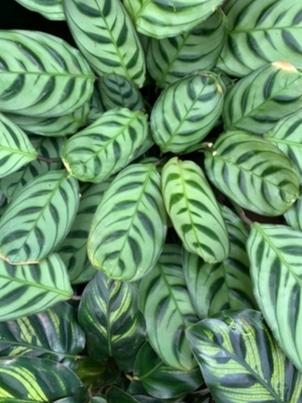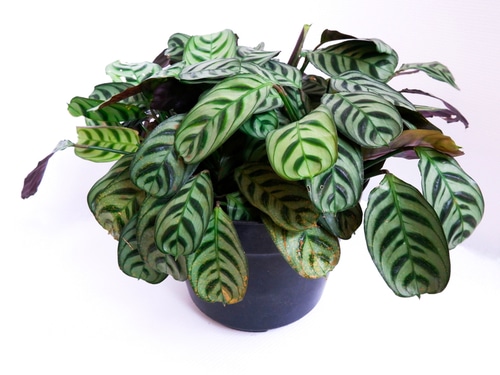The Calathea exotica, or Rattlesnake plant, is a popular houseplant known for its glossy leaves. Although it may look challenging to grow, this tropical specimen can be successfully cultivated in any home with the correct information.
This guide will provide you with everything you need to know about caring for a Calathea exotica, from tips on watering to advice on fertilization. If you’re looking for a beautiful tropical plant that adds a little bit of nature indoors, the Calathea exotica is a perfect choice!
What is a calathea exotica plant?
The Calathea exotica is a long-lived perennial plant that belongs to the family Calathea, which consists of over 200 plants, such as the Calathea Ornata. It is also known as the rattlesnake plant or zebra plant due to its markings. This plant is an exotic beauty that can be found in tropical areas, including South America. It’s prevalent in the rainforests of Brazil, where it grows up to 3 feet tall.
The Calathea exotica is also an understory plant, meaning it grows in the shade of large trees. It is a low-light plant, making it perfect for rooms that don’t receive much natural light.
How to care for a calathea exotica?
The calathea exotica has a reputation for being a fussy plant. It requires constant attention and daily care to grow healthily and happily. Here are some tips to help you grow a thriving Calathea exotica plant:
Sunlight requirements
The Calathea exotica prefers indirect sunlight or shade. It can survive well in low light conditions and shouldn’t be left in the full sun. This may surprise many people as the calathea exotica is a tropical plant, but it naturally grows underneath the tree canopy on the forest floor. Too much sun will cause the leaves to start to droop, and the leaves may get scorched by the sun.
Watering
Watering is one of the most important aspects of how to care for a Calathea exotica. This plant has specific water requirements, which you should follow closely in order to prevent root rot or salt damage.
This tropical beauty requires moist soil at all times and is quite a thirsty plant. The best way to water your plant is to soak the soil until no dry pockets are left.
Most people find that their Calathea exotica plant needs to be watered every few days to every week, depending on the climate and season. Don’t let your plant dry out between waterings.
These plants are also sensitive to chemicals and minerals in the water and should be watered with rainwater or filtered water at room temperature if possible. Alternatively, leave tap water overnight for the chlorine to evaporate.
Soil
The Calathea exotica prefers soil that’s able to retain water well. It can survive in most potting mixes but does best in peat-based compost with a pH range of approximately 6.5.
It’s is a long-lived plant which means that you should consider repotting every year or two to refresh the soil and ensure it has enough space. You should also use a container with a drainage hole. Although the plant likes moist soil, it does better in a pot where excess water can drain away. This will also help reduce the likelihood of root rot.
Fertilization
Use a balanced organic fertilizer once a month during the spring and summer months.
Temperature and humidity requirements
The Calathea exotica is used to warm temperatures, so avoid drafts and keep it away from cool windows. It should be kept in the mid-70s during the day, with a 5 degree drop at night. These plants can also be grown outdoors year-round in USDA zones 10 to 12.
The humidity level of your home will depend on where you live. If you live in an arid climate, you’ll need to find ways to raise the humidity levels in your home. A humidifier will help keep the humidity high enough for the Calathea exotica.
Alternatively, mist your plant daily or use a tray with pebbles and water, which can be placed underneath your plant. If you have more than one tropical plant, you can group them together to increase humidity.
Conclusion
The best thing about growing a Calathea exotica is how unique and tropical it looks. It’s a beautiful plant that grows best in humid environments, so you’ll need to make the right conditions for your plant. Follow these tips to keep your Calathea exotica growing happily!
Related: Do succulents like humidity?

